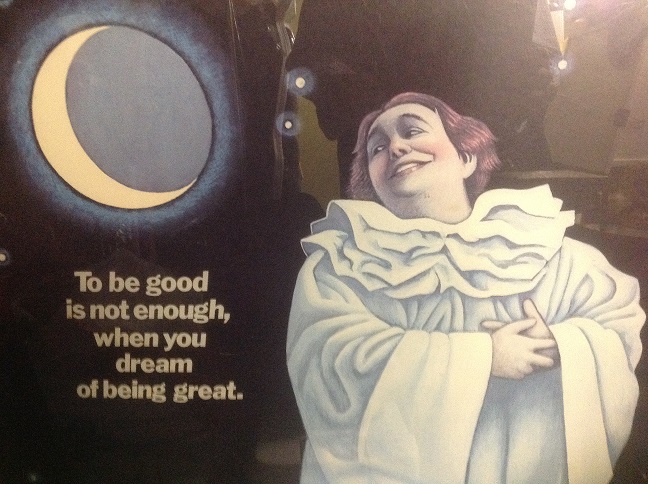
Retail History-Where does the Bon Marche go Now 1997
January 19, 2012What Successful Management Looks Like- The 1st and last chapter
January 10, 2013
Written by Jodie Buller
At the Seattle Center with my dad for Obama’s inauguration, I sang the national anthem with pride. It was a new feeling for me – I learned that song during the Carter years and was forced to sing it awkwardly through the Reagan era and the first Bush administration. I skipped it during the Clinton years and have pointedly kept my mouth shut lately, working on learning other songs instead: songs that opened my vocal cords, songs that felt good to sing. I spent some time during this last administration clarifying my value system and my definition of allegiance.
I am someone who is loyal to principles, to the highest value of human potential, and when a system fails to live up to its own rhetoric, and begins to spout incongruous propaganda, I give up my belief in that system. And so I have lost faith in those systems of education, health care, insurance, and commerce that do not actively support the development of our potential as whole human beings. And I am willing to support, with my shopping dollars and personal energy, those viable and common sense-based models – those congruous forms – of economic, social and environmental practices that uphold a triple bottom line.
People, Place, and Profit: stakeholders in sustainable success. This is what I think about when I define where my allegiance lives. My work is outreach and marketing for a food co-op in the Skagit Valley, so I get to practice my values on a daily basis. A cooperative business model: where the community contributes working capital, influences the growth direction of the business through an elected board of directors, and contributes to the success of the industry as a whole with their shopping dollars and invested feedback – is a different animal than the corporate system.
Corporate models are based upon a single bottom line: profit driven, growth oriented capitalism, and corporations have similar rights as individuals, which allow them certain leeway when it comes to worker and environmental rights. When governed by private interests and absentee stockholders, their sourcing and labor practices get sketchy.
We’re seeing this lately, finally, with toxic materials in toys, pesticides and GMOs in farm fields, ad waste disposal issues, that poison us start to finish and complicate our health care system, which must find solutions to new and strange challenges to the ever-shifting health of our planet and its inhabitants.
These are strong words. Co-ops are not the only solutions, but they are a model that works to establish a sustainable system – for food, for housing, for banking – for whatever people band together to help provide for themselves. Loyalty builds – that is one of its enduring qualities – and it builds because people are buying into a system that they believe works for them, from the inside out.
Growth has come to mean the loss of community fixtures, the hollowing out of community values. The pride that I felt during the national anthem came from sharing in a collective sense that we might be able to work together as a people to strengthen our shared values about what it means to be alive in this world: to work, to eat, to rest with our families and grow together.
Businesses to well to support that; in many ways co-ops get to be a pillar of 3rd Place for community, touchstones, resources. But every business has the capacity to extend that welcome to its customers; to grow a commerce that values its place and its people in line with its profit, in an authentic connection. It is not a one-way street – equitable business grows by being worthy of allegiance, and by being responsive to the values of its consumers and customer base. Active listening promotes trust. Responsiveness promotes respect. Trust and respect promote loyalty – it can’t be bought, but it can be earned.




